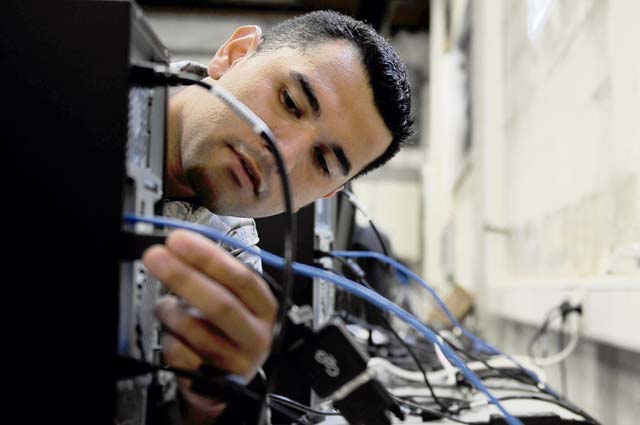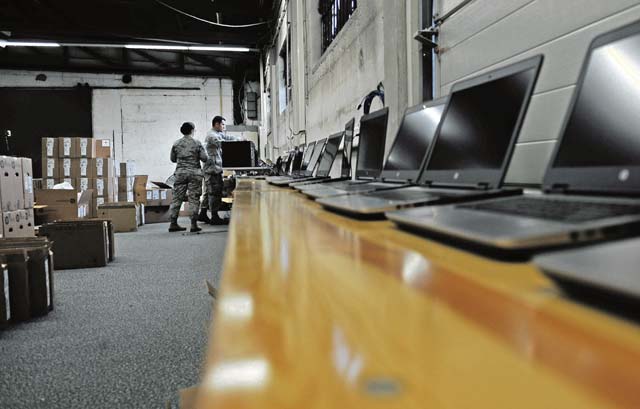
Every day the U.S. Air Force rallies in defense against enemy forces wishing to inflict harm, whether it’s through physical harm or via cyberattacks. As the advancement of technology expands, cyber security is more important than ever.
The National Security Agency has directed all of the Department of Defense to make the transition to Microsoft Windows 10. The NSA directive puts all branches of the military on the same operating system for the first time ever.
“The Air Force and (Department of Defense) are always moving forward in cyber security … to protect us against cyberattacks and provide a better and more protected network,” said Staff Sgt. Christian Valdivia, 86th Communications Squadron systems acquisitions supervisor.
Keeping up with the civilian enterprise has its challenges as the military fights for optimum security and for smooth communications between departments to deconflict software issues.
“In the past, we couldn’t put Air Force on Army equipment down range or vice versa due to software conflict,” Valdivia said. “The only solution then was reimaging the computer and wiping them completely, but with Windows 10, we won’t have to do that,” Valdivia said.
The 86 CS supports more than 24,000 network devices in the Client Systems Center, and they have a March 2018 deadline to ensure every computer in U.S. Air Forces in Europe migrates to Windows 10.
The 86 CS is capable of imaging 50 personal computers per day and has distributed approximately 250 each week since they started in May.
“We are taking a phased approach,” said Tech. Sgt. Ross Kosakowski, 86 CS systems acquisitions noncommissioned officer in charge. “We have machines that are capable of taking the new operating system remotely, but the first phase is taking care of the computers that aren’t compatible with it.”
To replace computers that can’t support the new software, USAFE purchased more than 3,000 computers, with the 86 CS expecting approximately 7,500 more to complete the mission.
As part of the first phase, the 86 CS adds the new computers to their inventory tracking system, then moves them to standard desktop configuration to be reimaged.
“We are taking that equipment and putting it on the network, making sure it has all the security updates to remove vulnerabilities and bring it up to compliance,” Kosakowski said.
Out with the old and in with the new, the 86 CS gives unit customers 30 days to bring in their old computers to ensure they are no longer connected to the network, as they are not compliant with new security standards and become vulnerable to viruses.
For customers who have compatible computers, the 86 CS will execute a network patch that will go out electronically once the first phase is complete.
“It’s the customer’s responsibility to frequently back up their computers,” Kosakowski said. “This is especially critical for the protection of documents and other important files during the Windows 10 installation.”
Having the latest and greatest technology at their fingertips, service members have the assurance of a more secure machine and communications with sister services without any compatibility issues.
Supporting the Kaisers-lau-tern Military Community and deployment of Windows 10 to surrounding bases, Ramstein leads the charge in USAFE towards a more secure operating system and standardization across the board.



